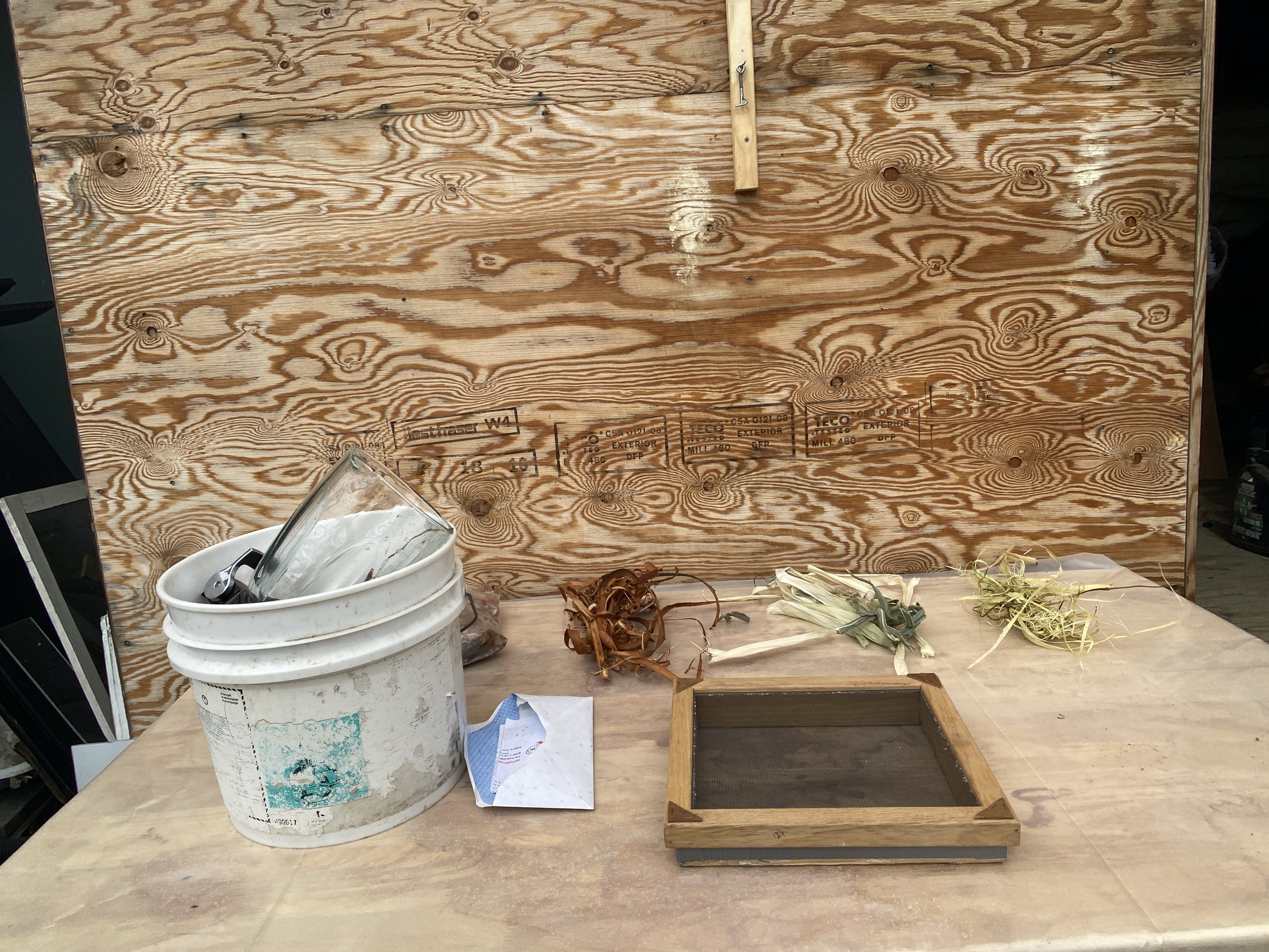Small
Victories Local Field School Very Simple Paper Making Recipe
With notes from Jackie Olson

Supplies needed:
- A
large basin- you can use a Rubbermaid container- this should be bigger than the screen you will use to scoop out paper.
- Fabric
scraps (in the spirit of experimentation we encourage the use of any any type
of fabric, but linen, rayon, and cotton will probably give better results (Jackie recommends 100% cotton) or plant fibre (dried) like corn husk, willow bark, onion
skin, birch skin, fireweed stalk, or nettle
- Newspaper
(like the one you’re holding now) or other scrap
paper- this will partially determine the colour of your new paper, newspaper,
because of all the ink, will make it quite dark.
- A
blender. If you blend pulp in small batches any regular kitchen blender will be
fine.
- Two
picture frames with a flat side (so they can lay flat against one another)
- Screen
(like what you use on windows)
- Lots
of towels/ paper towel
- An
iron, sponge, or rolling pin
Directions:
- Place the screen in between two
picture frames with flat backs, like a screen sandwich. You can glue or clamp
the screens together. You will use this later to scoop the pulp out from water.
Jackie showed us a deckle that she had made herself
out of a wood frame, which she stapled the screen to and then duct taped around
the edges.
Here is a video on how to make a deckle- you don’t need to follow all the steps, a simple screen set up will do! https://www.youtube.com/watch?v=sU71fWKR0wg
-
BREAK DOWN FIBRES: Cut some fabric scraps into very, very small pieces,
almost like confetti. From Jackie:
Jackie takes this one step further, and breaks each small
piece down into individual fibres. In her own practice, Jackie uses onion
skins, dried corn husks, and dried willow bark and shavings in this step. She
said that you can use anything fibrous- like dried fireweed stalks and nettle
as the fibre component of making the paper. The paper mulch acts as the binding
agent.
![]()
-
BOILING THE FIBRES BEFORE BLENDING: Depending
on what kind of fibres you are using, this could take a few hours. Jackie sometimes
will add soda ash, wood ash, or baking soda to the boiling fibres to break them
down even more. For cotton scraps, you can soak them before blending.
- Once they have been broken down, add a
few fabric or plants to a blender with some water and blend them up until the
scraps turn into a pulpy consistency. Start off with a small batch, try to make
about 1 cup of pulp at a time.
- Tear up the paper into small pieces
and add them to the blender with more water, and then blend it all together,
again looking for a pulpy consistency.
Between these two steps you can get a little experimental. You can try adding flower petals or leaves or herbs to the fabric + paper mixture.
- Pour the pulp mixture into the large
basin with lots of water. Make sure the basin is larger than your deckle so
that you can easily scoop the pulp out!
- Scoop out the pulp using the deckle
you made in step one. You can experiment with the thickness, but it’s important
to try and spread it out as evenly as possible. Here’s a video clip of what this
process looks like: https://www.youtube.com/watch?v=mE2VWojDb1g
Jackie also suggests that this is where you can try pressing whole petals or herbs into your paper. Think about colours and scents. Jackie suggest laying petals, etc. down onto the towel/ drying surface and placing the pulp
- Flip the screen over and place the
paper face down on a towel so that the pulp peels off in a flat sheet. Place
another towel on top and start pressing all the water out of the paper and
flattening it out. With a sponge, press gently at first, then press firmly with
as much pressure as possible. A rolling pin works great for pressing and
flattening at the same time!
- Let it dry- depending on the thickness
of the paper it could take 1-3 days to fully dry out. You can also iron the
paper to speed along this process but make sure there is a towel on top so you
don’t burn the paper.
-
Use
the paper! Write a
to-do list, or a thank-you card, or a jam jar label, or whatever!
